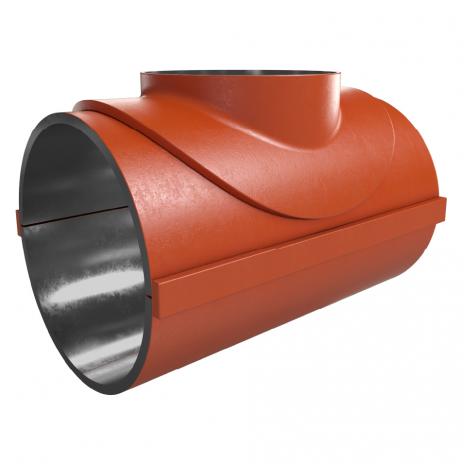- Toll Free 1.855.4RICE.RT
- Contact Us
-
Sign In
Full Encirclement Reinforcing Saddle
Rice is proud to work with WeldFit to bring their comprehensive suite of piping products to Canada.
Sometimes newly created welded tee connections on pipelines require additional reinforcement to operate safely and meet code requirements. That’s where WeldFit’s full encirclement saddles come into play. Their precision-made saddles are manufactured to a variety of specifications to help you meet ASME B31.3, B31.4, B31.8, and other industry codes.
-
WeldFit supplies full-encirclement reinforcing pipeline saddles with full-size or reduced-branch outlets. Their pipeline saddles come in a variety of sizes and configurations and are manufactured using ASTM A234 WPB and MSS SP-75 material grades.
Full encirclement reinforcing saddles are designed to completely encircle the run and branch pipe. They come in either two or three pieces that are installed around the run and branch. Full encirclement saddles are installed by welding the pieces together along the split lines and then filet welding the branch of the saddle to the branch pipe. The ends of full encirclement saddles do not have to be welded to the run pipe since the saddle is not pressure-containing. Welding the ends is not recommended in order to allow for differential expansion and contraction of the fitting and the run pipe.
- Part 1 – Two pieces split through the branch creating two symmetrical halves. These fittings can be installed in most situations, although the welding is often more difficult because of the transition from the run to the branch
- Part 2 – Two pieces split 90-degrees from the branch creating a top and a bottom. These fittings can only be installed if there is nothing yet attached to the branch pipe since the top has to be slid over the branch
- Part 3 - Similar to a Part 1, the top comprises two pieces that are welded together; a straight run section with a hole and an extruded saddle. There is no structural advantage to this type of arrangement over a Part 1, but it is sometimes required
- Part 4 - Similar to a Part 2, but instead comprising a run cylinder with a separate extruded saddle. There is no structural advantage to this type of arrangement over a Part 2, but it is sometimes required
- Part 5 - Three pieces split through the branch and on both sides 90-degrees from the branch. The result is a hemispherical bottom piece and two symmetrical top pieces. This type of saddle requires an additional weld, but it offers the greatest flexibility. It is particularly useful when reinforcement is required on a pipeline with restricted access to the bottom of the hole, e.g. the pipe is in a ditch
The standard design uses bars for welding the longitudinal seams of the full encirclement saddles. Welded bars only require filet welds to attach the pieces together although this can be done using full-penetration welds if preferred.
FEATURES
- Available for full-size or reduced-branch outlets down to 2"
- Multiple sizes and types available for immediate shipment
- Designed in accordance with ASME B31.3, B31.4, B31.8, and other applicable design codes
- Standard pipeline saddles available using ASTM A234 WPB and MSS SP-75 material grades
- Stainless or high-yield strength steel saddles
- ISO 9001:2015 certified
+


